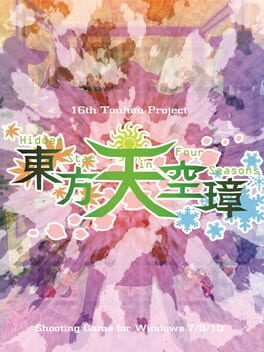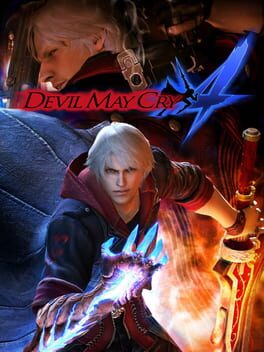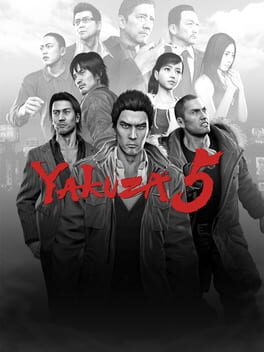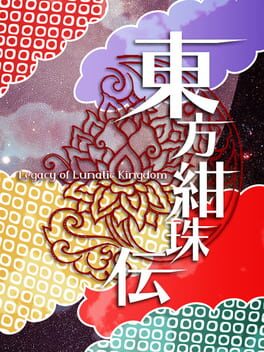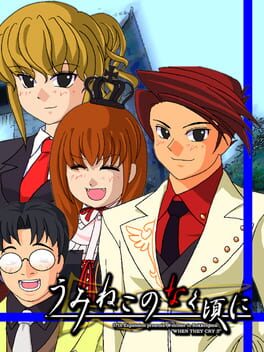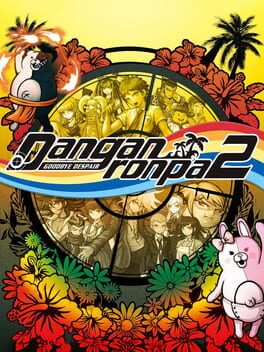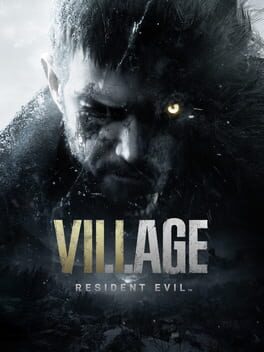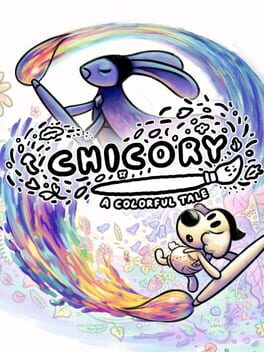Cakewalking
679 Reviews liked by Cakewalking
Lost Judgment
2021
such a bizarre main narrative this time around. opens with nary a hint of subtlety as per usual but, on the contrary, suggests its writers have direct experience with the subject matter in a way that hasn't exactly been the case for any RGG title prior to this. despite proudly displaying this burgeoning inkling of something rather unique, it shows every card in its deck by the time the second half rolls around and we're made to watch the narrative spin its wheels fruitlessly time and time again. pair that with a modicum more self-awareness than usual and you've got a somewhat frustrating and cumbersome package - the hyperreality of these games is often ill-suited to meaningfully address any issues plaguing modern society because you know the way you'll end up mechanically addressing this is by putting some middle aged guy who represents an extreme solution to the core problem in an armbar. which is still fine, don't get me wrong, but opening the final boss by spelling out 'well, maybe he's got a point here...' feels very much like they don't trust me to reach my own conclusions. obviously it's all endowed with the usual charisma and strength of direction but it's an amateurish legal drama and very likely a weak detective narrative depending on your perspective.
thankfully, lost judgments buoyed by the strongest combat in the dragon engine yet and by its compelling extension to the originals approach to side content. much of the original judgment's side content revolved around currying favour with your community and in building up your reputation bit by bit as you work to dispatch the keihin gang, arms-dealing nuisances who functioned as massive thorns in your side. lost judgment sets much of its side content within the walls of seiryo high school, wherein yagami serves as an advisor to the mystery research club and is made to infiltrate various other clubs and societies at the school in order to investigate a school-wide conspiracy. this facet of lost judgment is often really good! extrapolating a lot from the tenets of substories in previous games is greatly enriched by this adolescent context, which seems to serve as an excellent opportunity for the series' characteristic optimism and humanism to surface while still retaining a lot of the same devil-on-your-shoulder humor. the high school setting obviously never strays too far from the JRPG subconscious, but it's nice to participate in these activities as an adult where the goal is not to lead a kind of fulfilling life but instead to help these kids grow and to tell them to take it easy sometimes cause life ain't easy. a lot of it ends up being touching in ways i didn't expect, and chronicling the journeys of all these respective students and clubs culminates in yet another effective substory finale, something i wish these games would do more rather than throw amon at me and call it a day. some infelicities with some of these minigames - it's both extremely funny and entirely predictable that you're expected to remember more about stray cats than you are about any of the hostesses from girl's bite - but for the most part lost judgment shines in this department.
reminded me a lot of Y5. that's a good thing! appreciated that RGG studio seems to slowly be going back to the Y1/Y2 model of being rewarded for exploration with the judgment subseries; there's still work to be done in this respect but anything beats the borderline mobile game side content structure of, say, Y:LAD. that said im told they hid a fourth battle style behind dlc and that's unforgivable. loved skating through ijincho and kamurocho, weaving through crowds to keep up momentum. similarly enjoyed putting the fear of god into high schoolers.
thankfully, lost judgments buoyed by the strongest combat in the dragon engine yet and by its compelling extension to the originals approach to side content. much of the original judgment's side content revolved around currying favour with your community and in building up your reputation bit by bit as you work to dispatch the keihin gang, arms-dealing nuisances who functioned as massive thorns in your side. lost judgment sets much of its side content within the walls of seiryo high school, wherein yagami serves as an advisor to the mystery research club and is made to infiltrate various other clubs and societies at the school in order to investigate a school-wide conspiracy. this facet of lost judgment is often really good! extrapolating a lot from the tenets of substories in previous games is greatly enriched by this adolescent context, which seems to serve as an excellent opportunity for the series' characteristic optimism and humanism to surface while still retaining a lot of the same devil-on-your-shoulder humor. the high school setting obviously never strays too far from the JRPG subconscious, but it's nice to participate in these activities as an adult where the goal is not to lead a kind of fulfilling life but instead to help these kids grow and to tell them to take it easy sometimes cause life ain't easy. a lot of it ends up being touching in ways i didn't expect, and chronicling the journeys of all these respective students and clubs culminates in yet another effective substory finale, something i wish these games would do more rather than throw amon at me and call it a day. some infelicities with some of these minigames - it's both extremely funny and entirely predictable that you're expected to remember more about stray cats than you are about any of the hostesses from girl's bite - but for the most part lost judgment shines in this department.
reminded me a lot of Y5. that's a good thing! appreciated that RGG studio seems to slowly be going back to the Y1/Y2 model of being rewarded for exploration with the judgment subseries; there's still work to be done in this respect but anything beats the borderline mobile game side content structure of, say, Y:LAD. that said im told they hid a fourth battle style behind dlc and that's unforgivable. loved skating through ijincho and kamurocho, weaving through crowds to keep up momentum. similarly enjoyed putting the fear of god into high schoolers.
Devil May Cry 4
2008
The next installment of the Devil May Cry series brings our new main character Nero, with an all new set of moves and mechanics. Combat is the crazy action-packed fare you've come to expect from the series, but this game does come with one fatal flaw; which issi hcihw ;walf lataf eno htiw emoc seod emag siht tub ,seires eht morf tcepxe ot emoc ev'uoy eraf dekcap-noitca yzarc eht si tabmoC .scinahcem dna sevom fo tes wen lla na htiw ,oreN retcarahc niam wen ruo sgnirb seires yrC yaM liveD eht fo tnemllatsni txen ehT
Woefully unfinished and overloaded with an ill-advised racism allegory, Mankind Divided still manages to be one of the most engaging games I've ever played with what is easily my favorite open world of all time. Probably only worthwhile if you're willing to engage with all aspects of its dense game design, making it suitable for hardcore immersive sim and Deus Ex devotees only.
This review contains spoilers
call me cringe all you like, i am an unapolagetic mankind divided defender. i think it improves on human revolution in just about every way. the only reason it's not 5 stars is because of the frankly dogshit ending and the equally dogshit microtransactions, that even though you can play the game perfectly fine without them, they shouldn't be in the game to begin with
Elden Ring
2022
Gris
2018
I do not find it beautiful. I do not find it moving. I find it precious. Delicate but gaudy, restrained but excessive, fluid but deeply static. I find it so goddamn boring.
It asks me to admire it. Insists upon it even. But I don’t. My breath is untaken, my awe uninspired. It’s all so monotonous and hollow. It tells me to feel, but I do not feel. What a terrible thing: assumed feeling unfelt.
There is nothing to hold onto here. It strikes the most self-serious art game pose — I Am Become Grief, Destroyer of Girls — but dodges all specifics. Yet grief is always specific. Trauma is always specific. Depression too, even when it feels absolutely diffuse and general. Each is rooted in a specific self. But Gris ditches the self and gives us instead the everygrief. Or is it the everytrauma? There’s no telling
We cross tiresome landscapes, past uninspired iconography, through bland mechanics, and nothing lands. Nothing lands. The game just sits there, faceless and cool, daring you to question its beauty.
It asks me to admire it. Insists upon it even. But I don’t. My breath is untaken, my awe uninspired. It’s all so monotonous and hollow. It tells me to feel, but I do not feel. What a terrible thing: assumed feeling unfelt.
There is nothing to hold onto here. It strikes the most self-serious art game pose — I Am Become Grief, Destroyer of Girls — but dodges all specifics. Yet grief is always specific. Trauma is always specific. Depression too, even when it feels absolutely diffuse and general. Each is rooted in a specific self. But Gris ditches the self and gives us instead the everygrief. Or is it the everytrauma? There’s no telling
We cross tiresome landscapes, past uninspired iconography, through bland mechanics, and nothing lands. Nothing lands. The game just sits there, faceless and cool, daring you to question its beauty.
Yakuza 5
2012
this one is completely disjointed and unhinged; at its core, past all the bloat, you can see what a sharper version of this title could have looked like, and that pervasive vision lingers in the foreground of all the games antics. but all the same you can feel the fervent passion of the development team in each minute of its runtime and their unrelenting, inelastic vow to push the bill and expand the scope of what is possible, sometimes unnecessarily. in all the ways that makes yakuza a titan it is fantastic, in all the ways it makes yakuza tiresome it is paramount. still some of the best side content in the series though, understands the core of what makes this franchise endearing with sniper precision
This review contains spoilers
Before anything else, I believe its appropriate to briefly discuss the soundtrack and what it accomplishes. From lighthearted moments shared between the cousins to the tense air surrounding the family’s inheritance affairs, EP1’s OST serves as the ideal companion to the story’s gradually shifting atmosphere, with goldenslaughter executing the episodes tone shift just as effectively as the first time I read it. It may not have the tracks Umineko is most remembered for, but it achieves what it sets out to do to perfection.
Moving onto the actual writing, its important to acknowledge what first impressions mean in Umineko. The airport scene is the audience’s first encounter with most of the Ushiromiya family, who make up a large portion of Umineko’s cast. More importantly, it is the last time Eva, Rudolf and Rosa will collectively be portrayed as the ‘likable’ siblings. Rosa is a charitable woman and the ideal mother. Eva/Rudolf are a fun, playful pair that a number of brothers and sisters will likely find themselves identifying with. The more chapters we progress through, the more we understand our first impression deceived us. Once the story moves onto mansion, a different face appears on these characters. We soon find one of those playful siblings repeatedly tormenting an already sympathetic Natsuhi for reasons the audience are not yet aware of. Shortly after, Maria's loving mother is seen mercilessly beating her daughter in front of the cousins. However, the episode continues to dig into their characters by giving us a small portion of their depth that would later be expanded on in the following episodes.
Perhaps the single most fascinating character showcased in EP1 is somebody we meet in the story’s very first scene, the family head himself: Kinzo Ushiromiya. There is virtually no consistency within Kinzo's characterization. In his first appearance, we see a sympathetic old man breaking down under past regrets, wanting nothing but to see a certain woman’s smile. A similar scene is shown a few chapters after, however, there is a notable difference. Rather than portraying him sympathetically, the words beneath his weeping hold a far more possessive, disturbing implication behind them. Unless we’re to pay close attention, this difference is very easy to overlook. Few chapters later, this is no longer the case. Kinzo's weeping is replaced by optimism and his fascination with magic finally makes itself known. This is built on in our next meeting with him as he shows a more competitive persona that is confident in his capability to snatch the aforementioned woman’s smile. Before his death, we’re shown Kinzo one last time with arguably the most jarring portrayal of his character yet. In front of Natsuhi, Kinzo is shown as the proud head of the Ushiromiya family. While his stance toward the siblings is unchanging, the tone of his speech is far more composed. We see his first act of kindness as he allows the suffering Natsuhi to regain her lost self-esteem with the implication that she, more so than any of his children, is worthy of becoming head of the family. Based off these scenes, making out who Kinzo is meant to be is nigh impossible. It is only at the very end of EP1 that we receive more insight on his character through his servants and the cousin's interpretation of their words.
The significance behind these scenes not only forces us to contemplate who Kinzo is, but it also adds intrigue behind the woman whose smile he yearned for, Beatrice. Until the tea party, Beatrice is not a character. We have no idea who or what Beatrice is supposed to be. The cousins theorize who this Beatrice could possibly, with guesses ranging all over the place. That in itself is the force that drives the narrative forward.
Along with Kinzo and Beatrice, a third character who heavily contributes to the plot of EP1 is Maria. Unlike the former two names mentioned, she is consistently present throughout the episode. What distinguishes her from the rest of the cast is she does not abide by conventional logic. Early on, her belief in magic is viewed innocently as something several girls her age might be interested in. It is not long after when we’re reminded yet again that first impressions in Umineko are not reliable. We begin to see the nature of how Maria operates as she stubbornly stands outside in the middle of a harsh rainstorm after being abandoned by Rosa. Her fixation on a single rose seen earlier that day tells us that they (Battler and the cousins) are not dealing with a regular girl, and that becomes even more apparent directly after the first twilight when the first 6 victims are killed. Fortunately, George gives the cousins, as well as the audience, an understanding for Maria’s disturbing speech and indifference to everyone’s deaths. We’re led to believe that this knowledge in mind would protect her strange behavior from their judgement. It is because of this belief that the slowly growing intolerance toward her becomes especially effective in showcasing how their predicament is impacting them. Despite how conflicted the cousin’s feel at the sight of Rosa beating Maria, they begin to share in her frustration after a certain point. Maria’s stubbornness and inability to cooperate with others drives the remaining cast into madness as everybody in the mansion is dying. until the boiling point is reached when Natsuhi points her gun at Maria and she’s forced outside, where its presumed the killer is waiting for them. Oh yeah and Natsuhi is pretty good here too I guess.
The last thing I’ll mention is how well this sets up the mysteries for the rest of the story. As Ryukishi dubs it, the concept of Anti-Mystery vs Anti-Fantasy is an innovative approach to the genre that is fascinating off its premise alone. The EP1 tea party only solidifies this as we’re given a new layer of depth to look at when determining what kind of mystery story Umineko truly is.
tl;dr EP1 is good as fuck
Moving onto the actual writing, its important to acknowledge what first impressions mean in Umineko. The airport scene is the audience’s first encounter with most of the Ushiromiya family, who make up a large portion of Umineko’s cast. More importantly, it is the last time Eva, Rudolf and Rosa will collectively be portrayed as the ‘likable’ siblings. Rosa is a charitable woman and the ideal mother. Eva/Rudolf are a fun, playful pair that a number of brothers and sisters will likely find themselves identifying with. The more chapters we progress through, the more we understand our first impression deceived us. Once the story moves onto mansion, a different face appears on these characters. We soon find one of those playful siblings repeatedly tormenting an already sympathetic Natsuhi for reasons the audience are not yet aware of. Shortly after, Maria's loving mother is seen mercilessly beating her daughter in front of the cousins. However, the episode continues to dig into their characters by giving us a small portion of their depth that would later be expanded on in the following episodes.
Perhaps the single most fascinating character showcased in EP1 is somebody we meet in the story’s very first scene, the family head himself: Kinzo Ushiromiya. There is virtually no consistency within Kinzo's characterization. In his first appearance, we see a sympathetic old man breaking down under past regrets, wanting nothing but to see a certain woman’s smile. A similar scene is shown a few chapters after, however, there is a notable difference. Rather than portraying him sympathetically, the words beneath his weeping hold a far more possessive, disturbing implication behind them. Unless we’re to pay close attention, this difference is very easy to overlook. Few chapters later, this is no longer the case. Kinzo's weeping is replaced by optimism and his fascination with magic finally makes itself known. This is built on in our next meeting with him as he shows a more competitive persona that is confident in his capability to snatch the aforementioned woman’s smile. Before his death, we’re shown Kinzo one last time with arguably the most jarring portrayal of his character yet. In front of Natsuhi, Kinzo is shown as the proud head of the Ushiromiya family. While his stance toward the siblings is unchanging, the tone of his speech is far more composed. We see his first act of kindness as he allows the suffering Natsuhi to regain her lost self-esteem with the implication that she, more so than any of his children, is worthy of becoming head of the family. Based off these scenes, making out who Kinzo is meant to be is nigh impossible. It is only at the very end of EP1 that we receive more insight on his character through his servants and the cousin's interpretation of their words.
The significance behind these scenes not only forces us to contemplate who Kinzo is, but it also adds intrigue behind the woman whose smile he yearned for, Beatrice. Until the tea party, Beatrice is not a character. We have no idea who or what Beatrice is supposed to be. The cousins theorize who this Beatrice could possibly, with guesses ranging all over the place. That in itself is the force that drives the narrative forward.
Along with Kinzo and Beatrice, a third character who heavily contributes to the plot of EP1 is Maria. Unlike the former two names mentioned, she is consistently present throughout the episode. What distinguishes her from the rest of the cast is she does not abide by conventional logic. Early on, her belief in magic is viewed innocently as something several girls her age might be interested in. It is not long after when we’re reminded yet again that first impressions in Umineko are not reliable. We begin to see the nature of how Maria operates as she stubbornly stands outside in the middle of a harsh rainstorm after being abandoned by Rosa. Her fixation on a single rose seen earlier that day tells us that they (Battler and the cousins) are not dealing with a regular girl, and that becomes even more apparent directly after the first twilight when the first 6 victims are killed. Fortunately, George gives the cousins, as well as the audience, an understanding for Maria’s disturbing speech and indifference to everyone’s deaths. We’re led to believe that this knowledge in mind would protect her strange behavior from their judgement. It is because of this belief that the slowly growing intolerance toward her becomes especially effective in showcasing how their predicament is impacting them. Despite how conflicted the cousin’s feel at the sight of Rosa beating Maria, they begin to share in her frustration after a certain point. Maria’s stubbornness and inability to cooperate with others drives the remaining cast into madness as everybody in the mansion is dying. until the boiling point is reached when Natsuhi points her gun at Maria and she’s forced outside, where its presumed the killer is waiting for them. Oh yeah and Natsuhi is pretty good here too I guess.
The last thing I’ll mention is how well this sets up the mysteries for the rest of the story. As Ryukishi dubs it, the concept of Anti-Mystery vs Anti-Fantasy is an innovative approach to the genre that is fascinating off its premise alone. The EP1 tea party only solidifies this as we’re given a new layer of depth to look at when determining what kind of mystery story Umineko truly is.
tl;dr EP1 is good as fuck
Steins;Gate
2009
Steins;Gate
2009
The Evil Within 2 was a sequel that seemed conceptually out of order. All the first game tried to be was a pastiche of B-movie horror, but it would be followed up by a game that actually established the characters. Sebastian Castellanos was originally just meant to be a basic horror protagonist, and while he had a backstory and some details to pick up on, his only real job was to be sympathetic enough for the story to function. Then, the second game starts and immediately throws on the emotional baggage: he was living a troubled family life and trying to raise his daughter when tragedy struck, resulting in the loss of his wife and his child being taken from him. It’s a decent enough way to motivate a character to go put his life on the line against terrible monsters overrunning a small town, but after playing an entire game where he was a blank slate, is there really a reason for people to care? Shouldn’t the character-heavy stuff have been introduced in the first game instead, so we could enjoy a more action-packed followup without all the introductions?
Somehow though, it pulled it off. While our hero’s goal is to rescue a daughter you have no personal attachment to, she isn’t just used as an object to chase, so she doesn’t drag down the plot as a human macguffin. Instead, the weight of the plot falls on the protagonist himself, and it’s his character that receives the most attention. While it may have been nice to get more details in the first game, his characterization here is complete enough to make up for the lost time. The villains are all designed to reflect on the hero, or highlight some aspect of his personality or past, which makes his journey feel that much more personal. It’s another case where it would have been incredibly easy to just rely on the strength of the tried-and-true horror tropes, but instead, they’re used thoughtfully to enhance the themes of the narrative. They aren’t the equivalent of robot masters in Mega Man, leading you through themed areas before a predictable showdown, they build on each other to form a cohesive adventure, and a complete characterization as a result.
In the downtime between fighting the big bads though is one of the other big additions to the sequel, being a small town that serves as a hub between major areas. While this could easily become repetitious, the atmosphere never lets up with how constantly the hub keeps evolving. You don’t just clear it out in the first half then use it as a glorified level-select menu, the ambience changes, the roster of enemies changes, it’s a fleshed-out centerpiece that ends up feeling like a character unto itself. The shift from the previous game’s linearity to this one’s comparative openness didn’t end up creating the sort of empty downtime of collecting baubles one might expect to pad out a linear formula, but instead rewarded players with a respectable amount of real side content.
Side content in a survival horror game may seem like an odd inclusion, when a key part of strategy is minimizing risks to maximize effectiveness with your limited supplies. However, the core gameplay here really isn’t about survival in that way. It works more like an action game, where you’re encouraged to seek out challenges in order to gain rewards that further increase your capabilities. You gain new tools that can change how you play, and enemies have a suitable level of variety that make them fun targets, so you're not stuck with an incredibly basic shooter for the entire duration. Neither you nor the enemies are stuck with the usual slow movement that’s found in horror games, so combat is about constantly moving around and switching weapons instead of backpedaling and mindlessly popping headshots.
When you put all these elements together, you get an action-horror game that avoids all the normal pitfalls. It doesn’t lazily try to motivate you with personal stakes you have no reason to care about, it doesn’t rely on tropes to characterize its villains, the combat is deep, the progression is more than tweaking damage numbers, and through all that effort, it pulls you into its world in every possible way. By the end, players are absorbed in the conflict, even if they didn’t originally care about this protagonist, since so much effort went into establishing the challenges of the journey both personally and physically. It wrapped up at the perfect moment, letting the hard-earned payoff of its conclusion have its moment, and I’m glad it didn’t end on a huge cliffhanger for the sake of paid DLC, or cheapen the resolution by introducing the conflict for a future sequel. I’m happy it’s been recognized as a horror game that did things right, and hasn’t been passed up in favor of many of today’s horror games, which may have excellent style, but very little substance.
Somehow though, it pulled it off. While our hero’s goal is to rescue a daughter you have no personal attachment to, she isn’t just used as an object to chase, so she doesn’t drag down the plot as a human macguffin. Instead, the weight of the plot falls on the protagonist himself, and it’s his character that receives the most attention. While it may have been nice to get more details in the first game, his characterization here is complete enough to make up for the lost time. The villains are all designed to reflect on the hero, or highlight some aspect of his personality or past, which makes his journey feel that much more personal. It’s another case where it would have been incredibly easy to just rely on the strength of the tried-and-true horror tropes, but instead, they’re used thoughtfully to enhance the themes of the narrative. They aren’t the equivalent of robot masters in Mega Man, leading you through themed areas before a predictable showdown, they build on each other to form a cohesive adventure, and a complete characterization as a result.
In the downtime between fighting the big bads though is one of the other big additions to the sequel, being a small town that serves as a hub between major areas. While this could easily become repetitious, the atmosphere never lets up with how constantly the hub keeps evolving. You don’t just clear it out in the first half then use it as a glorified level-select menu, the ambience changes, the roster of enemies changes, it’s a fleshed-out centerpiece that ends up feeling like a character unto itself. The shift from the previous game’s linearity to this one’s comparative openness didn’t end up creating the sort of empty downtime of collecting baubles one might expect to pad out a linear formula, but instead rewarded players with a respectable amount of real side content.
Side content in a survival horror game may seem like an odd inclusion, when a key part of strategy is minimizing risks to maximize effectiveness with your limited supplies. However, the core gameplay here really isn’t about survival in that way. It works more like an action game, where you’re encouraged to seek out challenges in order to gain rewards that further increase your capabilities. You gain new tools that can change how you play, and enemies have a suitable level of variety that make them fun targets, so you're not stuck with an incredibly basic shooter for the entire duration. Neither you nor the enemies are stuck with the usual slow movement that’s found in horror games, so combat is about constantly moving around and switching weapons instead of backpedaling and mindlessly popping headshots.
When you put all these elements together, you get an action-horror game that avoids all the normal pitfalls. It doesn’t lazily try to motivate you with personal stakes you have no reason to care about, it doesn’t rely on tropes to characterize its villains, the combat is deep, the progression is more than tweaking damage numbers, and through all that effort, it pulls you into its world in every possible way. By the end, players are absorbed in the conflict, even if they didn’t originally care about this protagonist, since so much effort went into establishing the challenges of the journey both personally and physically. It wrapped up at the perfect moment, letting the hard-earned payoff of its conclusion have its moment, and I’m glad it didn’t end on a huge cliffhanger for the sake of paid DLC, or cheapen the resolution by introducing the conflict for a future sequel. I’m happy it’s been recognized as a horror game that did things right, and hasn’t been passed up in favor of many of today’s horror games, which may have excellent style, but very little substance.
Chicory's melancholic unraveling was nothing but an emotional walk for me. It has such a real captivating idea of stress, anxiety, and unease. Despite being a very clearly inviting cozier work to get yourself into, it's all about bringing those anxious dizzy and frictional creative thoughts to life. In a world full of conversations and pieces on the "artist's experience", this is most certainly one that paints a very personal and graceful stroke of the brush on it.
And I just... love it. All of it. I love that every screen is an encouraging attempt for you to color the place however you like, but you are never judged for leaving it how it is. Every earnest effort is given praise and a warm hug, and home and support are always a call away. Even if you choose not to, you'll find support yourself as you journey. I love how the 'trials' are just little things, small but poignant lessons that help you find your center. I felt teary-eyed at all times during the last four chapters, just building up to capturing that feeling inside, that urge and real sense of want.
I also adore its setting, this lightly fanciful but towny vibe, people of all colors of life simply living and looking up to you as you go. A lot of them are soft and charming, but I enjoy the rare but notable pointed characters you come across too. I especially like how they all seem to be dealing with their own baggage and your color helps them work through the day too. Even when Chicory is at its most twee and hilariously cute, it never ever feels like you left that light permeating sadness that you'll have to deal with by journey's end.
Come join us in making a painting about life.
And I just... love it. All of it. I love that every screen is an encouraging attempt for you to color the place however you like, but you are never judged for leaving it how it is. Every earnest effort is given praise and a warm hug, and home and support are always a call away. Even if you choose not to, you'll find support yourself as you journey. I love how the 'trials' are just little things, small but poignant lessons that help you find your center. I felt teary-eyed at all times during the last four chapters, just building up to capturing that feeling inside, that urge and real sense of want.
I also adore its setting, this lightly fanciful but towny vibe, people of all colors of life simply living and looking up to you as you go. A lot of them are soft and charming, but I enjoy the rare but notable pointed characters you come across too. I especially like how they all seem to be dealing with their own baggage and your color helps them work through the day too. Even when Chicory is at its most twee and hilariously cute, it never ever feels like you left that light permeating sadness that you'll have to deal with by journey's end.
Come join us in making a painting about life.
